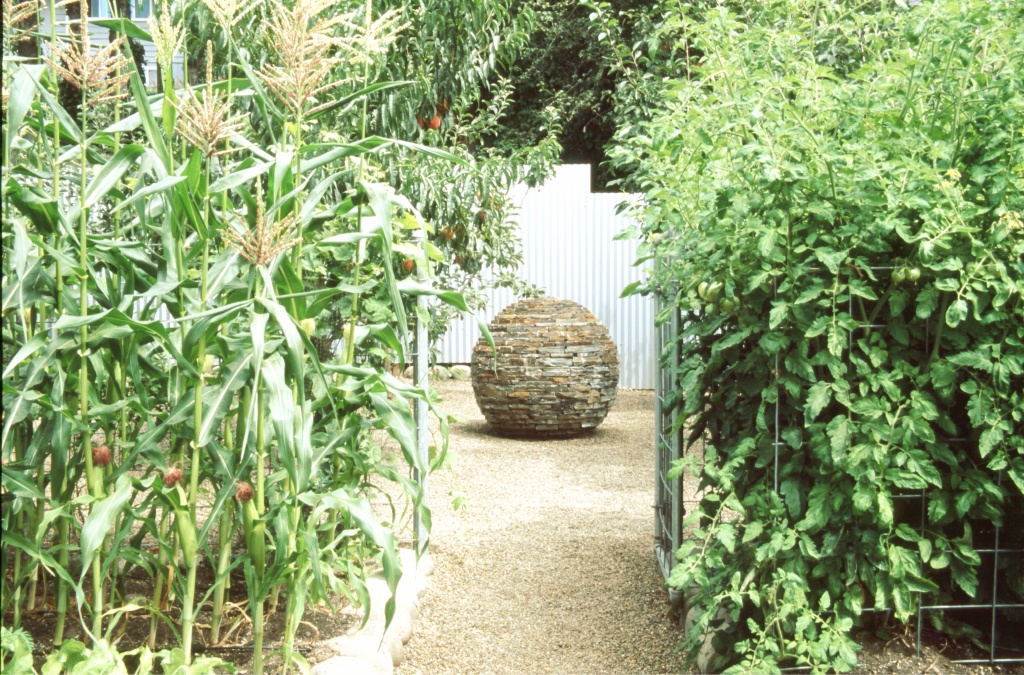
In our most recent newsletter, we promised to offer ideas to make gardening more fulfilling. For us, nothing is more fulfilling than bringing in the harvest from our orchard and veggie garden. The size of the harvest - buckets of apples or a handful of fresh herbs - isn't as important as the connection to our garden and our food (although the food itself ain't bad). We talked about designing veggie gardens in an earlier newsletter, but not everyone has the time, sunny space or inclination to devote to a full-on orchard or veggie garden. Whether you're a serious veggie gardener or an aspiring gardener in an apartment, here are a few ideas for incorporating food into busy lives and small spaces.
Herbs - Anyone with sun can grow culinary herbs, many of which are pretty ornamentals. Trailing rosemary and thyme can spill over borders, walls or the edge of a container, and other herbs, like upright rosemary can be sheared into cones or other shapes. Bay is an attractive broad-leafed "foundation" for an herb or veggie planting (ours even survived the single digit temps!). Consider foliage texture and color in placing your herbs, and you may find that your herb garden is a year-round beautiful corner of your garden.
Alliums - One difficulty with growing vegetables and fruits is that so many are high-maintenance plants. The little divas want to be staked, watered, thinned, and otherwise coddled more often than many busy people can handle. Alliums, such as garlic and onions, on the other hand, are low-key, low-maintenance, and low-water. They only require attention two or three times a year, and they rarely or never need additional water. They can be harvested throughout the season and dried, letting all of your "hard work" last into the winter! (Question - Has anyone planted edible alliums around deer? We know ornamental alliums are rarely, if ever, browsed by deer, and we've heard that edible alliums are often ignored as well. What's your experience?).

Containers - Some veggies and fruits make beautiful container plantings. The striking silver foliage of artichokes and cardoons, for instance, are beautiful with annuals (as in the photo at right) or with trailing herbs, nasturtiums and purple basil. If your sun or space limit you to a container veggie garden, consider arranging your pots with an eye towards foliage combination, and perhaps add a few low herbs or annuals to spill over the edges. One of our friends had a container veggie garden on the deck of her second floor apartment. With peas climbing the railing and lettuce in hanging baskets, she packed a lot of food and beauty into a tiny space.
Thanks for reading! We hope you're enjoying your gardening (veggie and otherwise) and the nice weather. We'll be back with a post-mortem from the hard winter freeze and another spring cleaning idea.






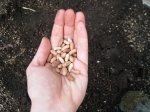 I love planting our veggie garden. It's hard to believe that tiny seeds and transplants will produce so much beautiful food! Two photos from this morning and one from last fall.
I love planting our veggie garden. It's hard to believe that tiny seeds and transplants will produce so much beautiful food! Two photos from this morning and one from last fall. 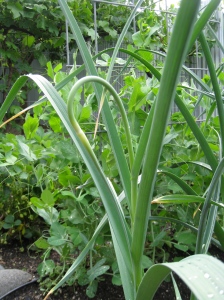
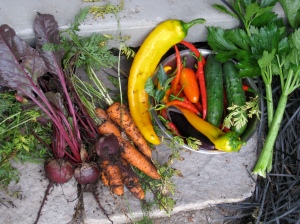
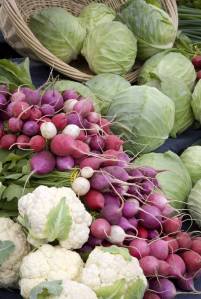 Just a quick note to announce the photography exhibition of our friend,
Just a quick note to announce the photography exhibition of our friend, 